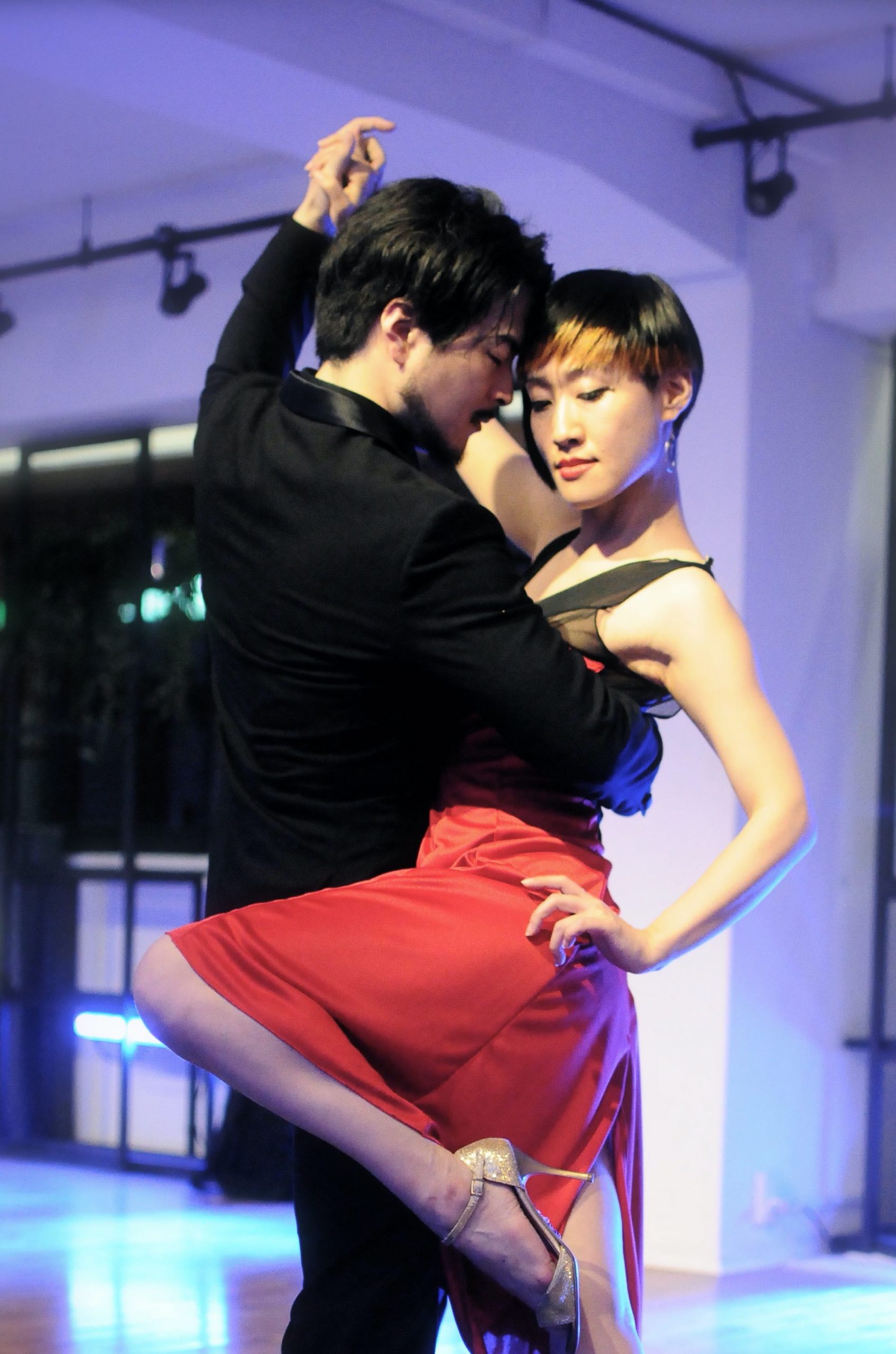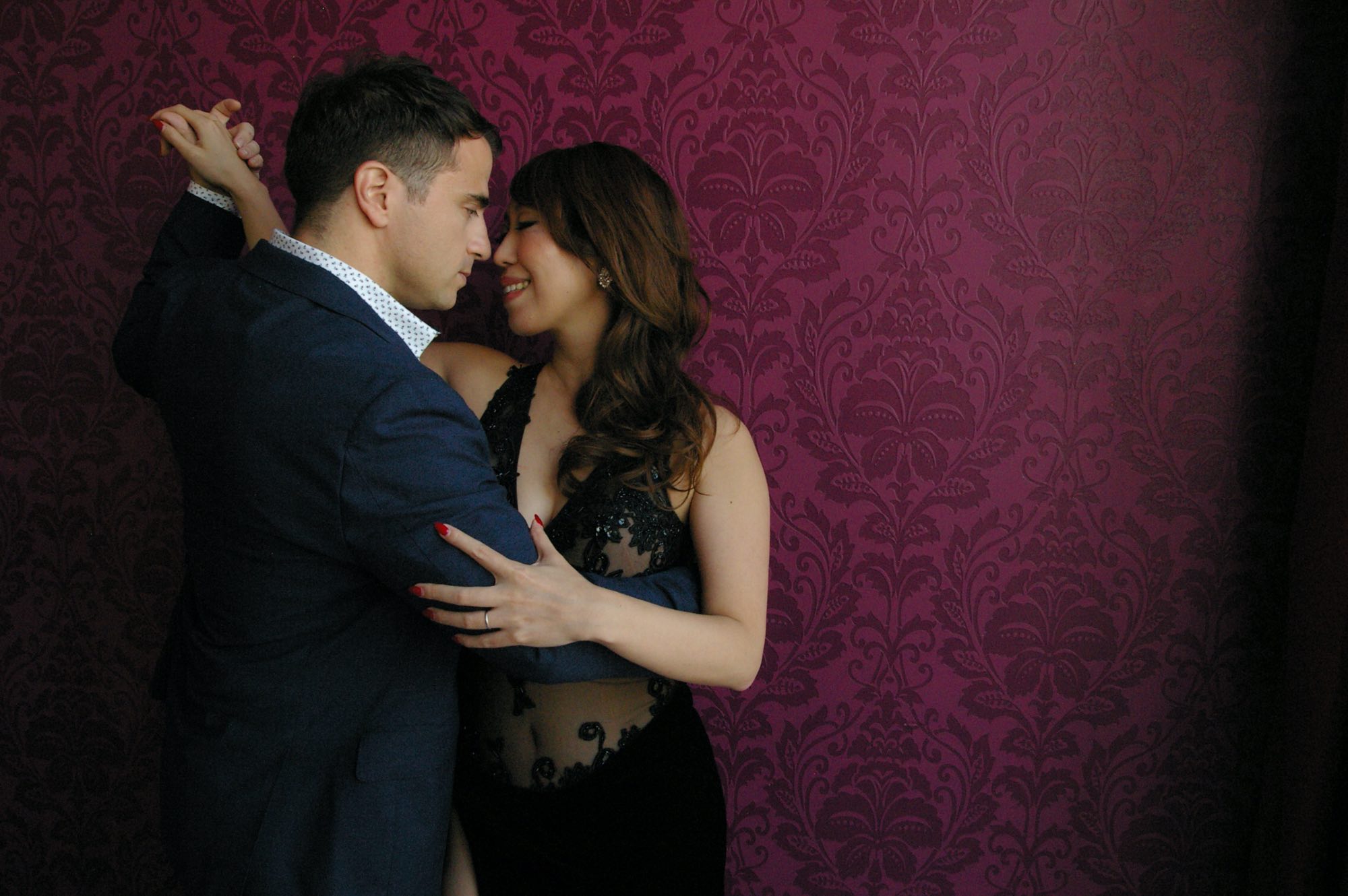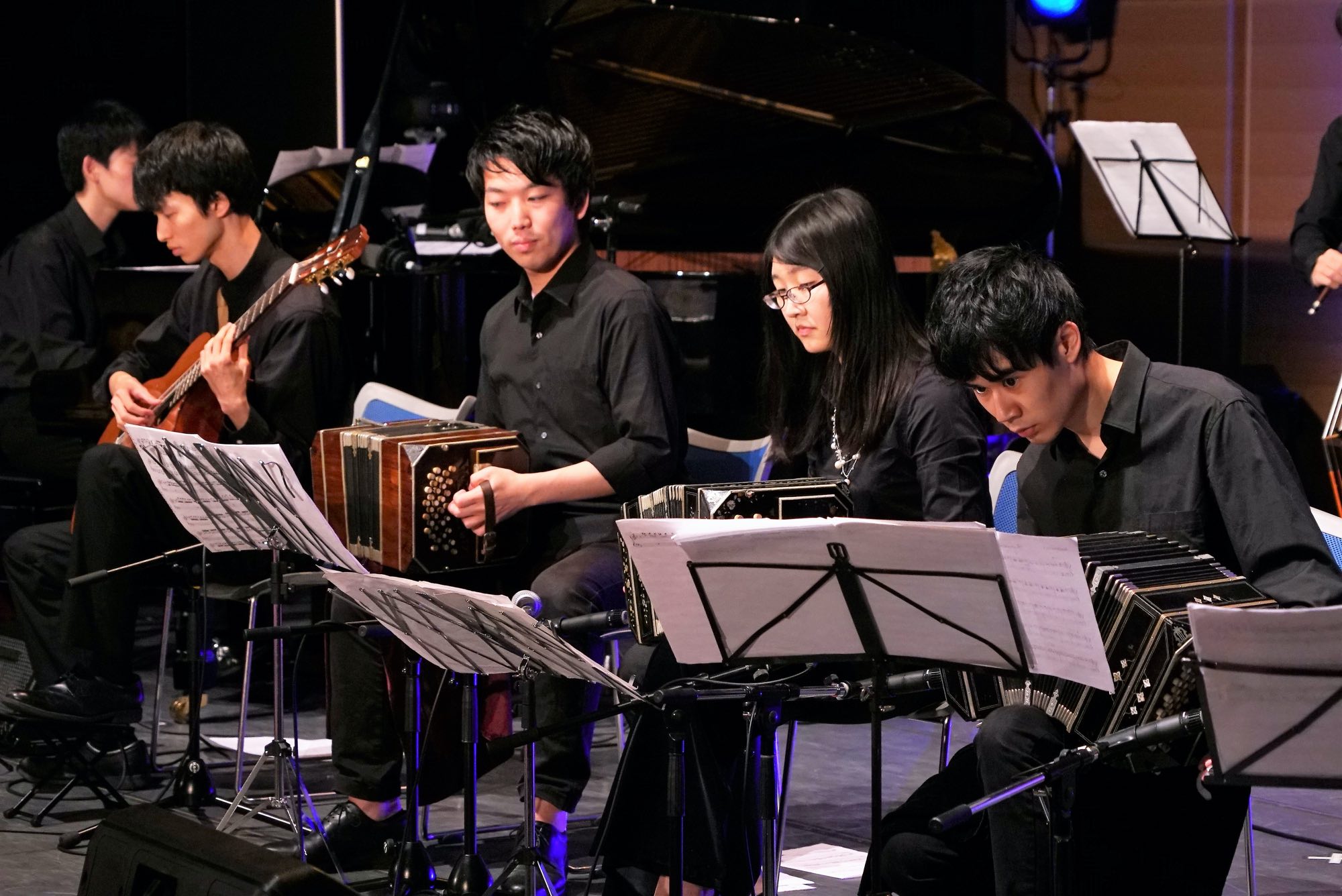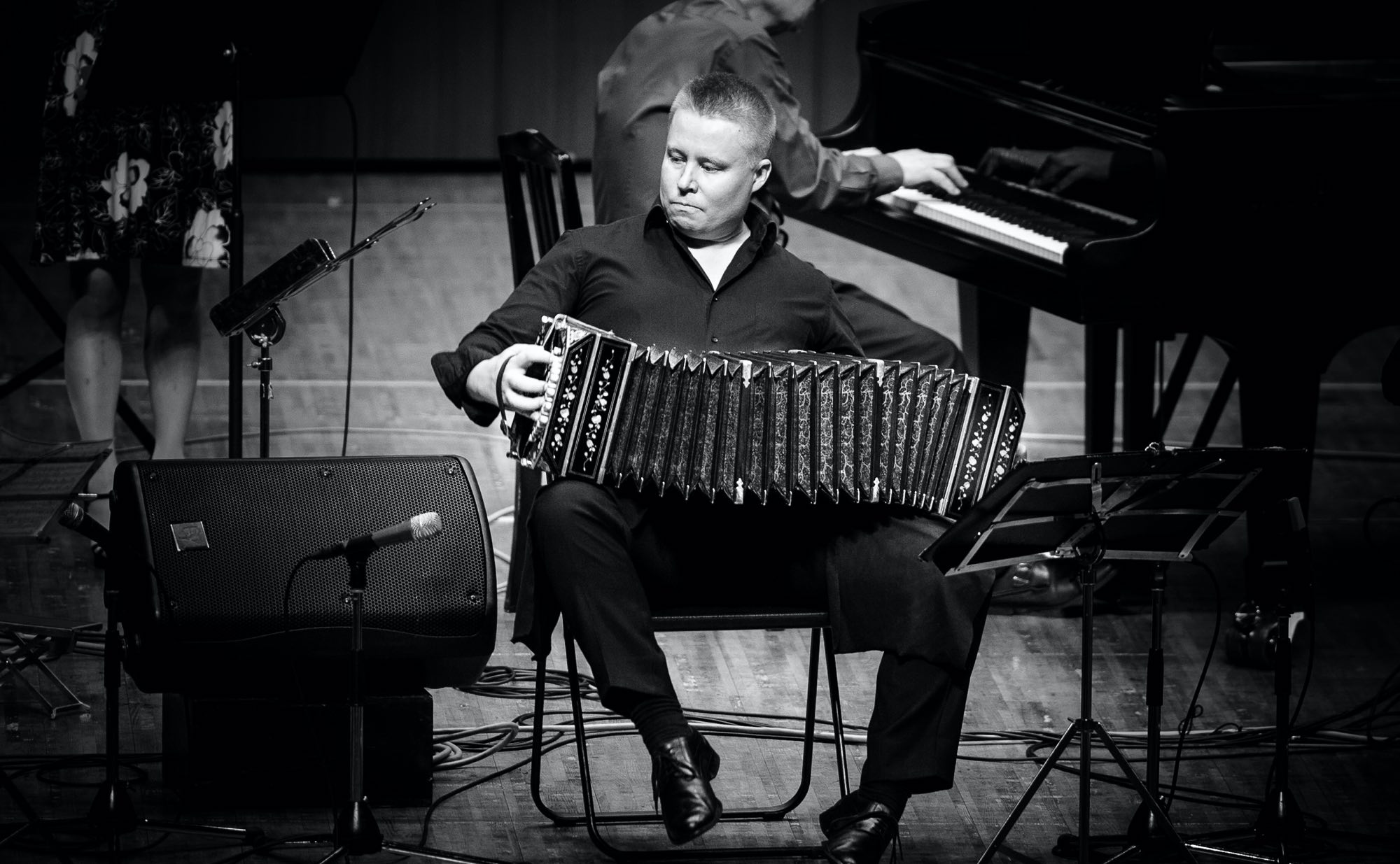A Break From Argentine Tango
The Argentine Tango Tradition In Japan And Its Fight To Survive
Japan and Argentine Tango don’t seem to connect, and yet we always spot a tango studio when wandering in the city. With social distancing recommendations in place, many Argentine tango enthusiasts are left missing out on their favorite activities: dancing and listening to tango music. But is this really the end of tango in Japan?
My curiosity in Argentine tango started after watching a 2006 movie called Take the Lead, where Antonio Banderas danced a loosely tango-inspired dance with his female student. The dance they performed was so intense that I could not take my eyes off of it.
Coming from Indonesia where oftentimes a slight display of intimacy in public can be met with frowns and judgments—and even harsh punishment in one of its provinces—Argentine tango is a dance that could make passersby blush. And when I started learning, I did too. I could not imagine how I should embrace my male instructor who was still a complete stranger to me at that time, but I wanted to learn nonetheless.
[…] how come this dance from far Latin America has come to flourish in a country with a culture so different and more than 18,000 kilometers away?
When I moved to Japan, I was surprised to find out just how many milongas (a social dance party for Argentine tango dancing) and milongueros (milongas veterans) there were. Compared to Indonesia’s 6 registered milongas, Japan has 32, surpassed only by South Korea, despite a tango boom that only started two decades ago. It is so popular that they adapted the classic Tale of Genji and meshed it with Argentine tango back in 2008. So how come this dance from far Latin America has come to flourish in a country with a culture so different and more than 18,000 kilometers away?
Japan & Argentine Tango, a surprising love story
Apparently, Japan has long acquainted itself with Argentine tango. The most common story I found mentions Baron Tsunayoshi Megata introducing an English-style tango to the Japanese elites after he returned from Paris in the 1920s, while a less popular account mentions the contribution of Hirano Banri, a French literature professor returning from Paris with a series of recordings.
Later, he is said to have taught private tango lessons at Bunka Gakuin Academy. Yet, Yuki Asaba recorded the first press appearance of tango dance in the Tokyo Asahi Shimbun Newspaper on Aug. 14, 1913. With the ban of jazz music as World War II approached, people turned to the melancholic sound of tango music, and its popularity in Japan only grew from there.
with the ban of jazz music as World War II approached, people turned to the melancholic sound of tango music, and its popularity in Japan only grew from there
Nevertheless, the pandemic has not spared this beautiful dance. The importance of social distance for the sake of public health means that it might take us much longer to go back to dancing the tango and playing or listening to tango music with fellow aficionados.
So, what does this mean for the tango community in Japan?
For professional tango dancers and instructors, this means closing down their studio temporarily and suspending both the milongas and studio classes. Sumire and Tamai, having paired up as instructors and performers for seven years since the foundation of their Tokyo dance studio, Studio RADA, admitted to having only online classes during the state of emergency.
While now they have started their three group classes, one practica (practice) and a private milonga every week, the difference is still felt with a much smaller scale in terms of the number of participants, and shorter duration—no more than two hours each. Before Covid hits, their milonga would follow group classes and would allow participants a maximum of five hours of dancing: their studio would be packed with dancers. Additionally, the pandemic restrictions mean they could not perform domestically or internationally as they used to, which is 2-3 times a month on top of traveling abroad to visit overseas tango studios.
Alejandro Crivelli and Kumiko Mori who have been teaching tango regularly at Tango Sol in Nihonbashi confirmed a similar situation. Both veterans in tango dancing, they started teaching and performing together three years ago with up to 20 group classes and 40 private lessons each month, but eventually, they put them on halt last March. They also had to cancel their participation at the Congreso Internacional de Tango Argentino 2020 in Buenos Aires for safety reasons.
for professional tango dancers and instructors, this means closing down their studio temporarily and suspending both the milongas and studio classes
Now, they have restarted their group and private lessons as well after implementing safety measures, but they only hold up to 16 classes per month with significantly fewer students. For both studios, it would be a while before things could return to how it used to be, it seems.
Taking the Tango online
For the time being, it seems like hosting online classes is the only 100% safe solution available.
Alejandro and Kumiko have started hosting a weekly online lesson on the history of Argentine tango, conducted in Spanish and Japanese, while Sumire and Tamai continue providing tango classes online with adjusted instructions. Instead of a gathering where students could learn their steps directly, now they need to take turns in demonstrating the different steps of the leader and the follower in tango.
Yet, online classes pose another challenge that needs to be resolved.
For one, students do not always have partners to practice with at home. This means learning how to connect with the partner while dancing—a crucial element in tango dancing—is not always an option for everybody. Additionally, having to rely on a two-dimensional camera as a visual medium can be difficult for orienting the steps taken while dancing.
How dancers and musicians adapted
A tango dancer for three years now, M. mentioned a similar difficulty when learning tango steps through online classes offered by a studio she frequents in Tokyo. Not only a reliable internet connection is required, but she also has to make do with the space she has at home to practice.
Mizuki Nishizawa, who is a tango dancer since 2017, is facing the same situation in Ōsaka. Both admitted that online classes could not replace studio classes, but realize the necessity of taking precautions against Covid-19. This mainly means adjusting to the space they have. Mizuki decided to purchase a small floorboard she could attach to her apartment floor to improve her self-practice at home with her dance shoes without damaging her apartment floor.
both admitted that online classes could not replace studio classes, but realize the necessity of taking precautions against Covid-19
In addition to this, Mizuki has also started an online study group. As a former member of Waseda University’s student group—Orquestra de Tango Waseda—she invited her fellow tango musicians and a few dancers to share their insights on tango music. Mizuki said this group has provided them an outlet to share their passion when they cannot practice together.
Mizuki’s fellow musician, the current bandmaster, and guitarist of the orchestra, Yamato Kurebayashi, also told us that the pandemic has affected their group. They had to cancel their freshman recruitment and summer camp this year, in addition to not being able to practice together.
The biggest challenge is ensuring that each member has the time and space to practice at home since they all now have to juggle between many online classes. The orchestra is scheduling three online concerts on their YouTube channel this fall and winter, and he is hoping to be able to implement safety measurements once they can practice together again.
A more veteran tango musician, Ville Hiltula, shared as well the effect of Covid-19 on his work. He started playing Argentine tango music as a professional bandoneon player in 2002. Currently living in Kobe, he has been performing actively around Japan with groups like Ville Hiltula Tango Cuarteto and Tangueros Árticos. He used to perform in up to 10 events per month but has not performed since Mar. 6. All his upcoming shows have been either postponed or canceled until further notice.
Thankfully, his online bandoneon lessons have been ongoing and are not significantly affected by the pandemic, except for having slightly fewer students than before. So now he is devoting his time to his online teaching, finishing the production of Tangueros Árticos’ first studio album, due to come out this autumn, as well as preparing the repertoire for his own upcoming solo album, scheduled to release at the end of this year.
Concert halls and tango studios are reopening slowly, ready to host tango music performances, private milongas, and classes—albeit on a smaller scale since safety measurements need to be implemented, as also advised by the Federación Japonesa de Tango Argentino (FJTA)—the Argentine Tango Dance Federation in Japan.
The number of participants is limited with a strict RSVP system that only allows prior reservations. There is also a strict handwashing policy with hand sanitizers readily available, as well as temperature checks upon entrance, and mask-wearing is mandatory at all times. Lastly, as a safety precaution in case of infection, participants would need to consent to provide their contact information in order to keep track of the virus route.
Yet how long would it be until it is safe for the tango community to resume dancing and performing like they used to? As for now, it seems that the young yet strong tradition of Argentine tango in Japan will still remain, and that is enough reason to be optimistic to see it thrive in the future. When that time comes, vamos a bailar!














Leave a Reply